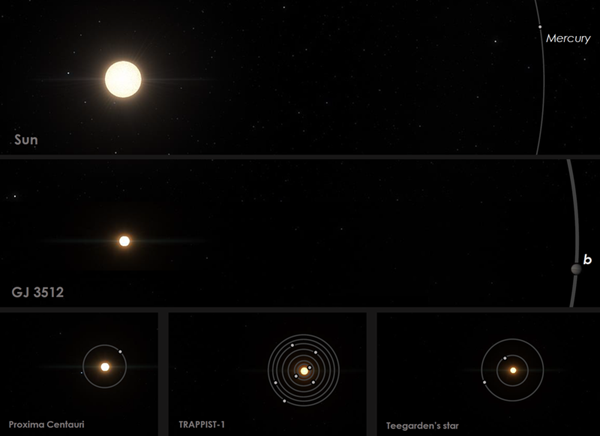Weirdly giant planet found around tiny star defies expectations – Astronomy Magazine
This image shows a comparison between the solar system, the GJ 3512 system, and a few additional red dwarf systems such as Proxima Centauri and TRAPPIST-1.
Guillem Anglada-Escude – IEEC/Science Wave, using SpaceEngine.org
GJ 3512 and its planet(s)
The discovery is important because red dwarfs are thought to be the most common stars in the universe, accounting for roughly 75 percent of all stars. And typically, red dwarfs only have a few petite planets. This is because small stars shouldn’t have enough extra material left over from their formation to build large planets.
The planets found around red dwarfs typically range from about the mass of Earth to roughly the mass of Neptune. But they almost never approach the mass of Jupiter, like GJ 3512 b does. (For reference, Jupiter is about 300 times the mass of Earth and 20 times the mass of Neptune.)
Because GJ 3512 b is such a big fish in a little pond, the researchers say its host star shouldn’t have had enough material to form the gas giant in the first place — at least according to current models. So, simply the existence of GJ 3512 b is making researchers reconsider whether gas giant planets really must start their lives as nascent embryos of heavy particles before gobbling up copious amounts of gas (a process called core accretion).
“One way out would be a very massive disk that has the necessary building blocks in sufficient quantity,” said planet-formation expert Hubert Klahr from the Max Planck Institute for Astronomy (MPIA) in a press release.
The basic idea is that if the star GJ 3512 initially started its life surrounded by a particularly massive disk of both gas and dust, the gravity of the disk itself would be strong enough to trigger instabilities within it. Some regions of the disk would then directly collapse, ultimately forming large planets without undergoing the typical two-stage growth process.






